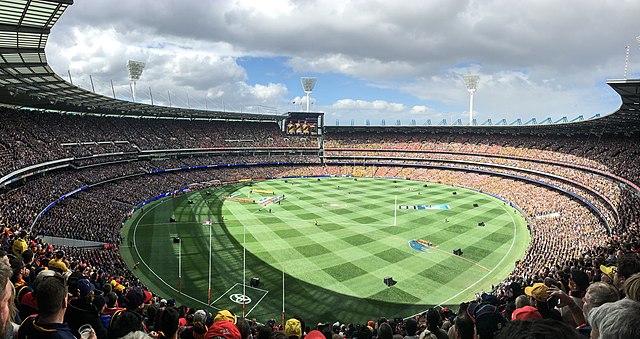
Diophantine footy 2: generalised footy
BTW, this is a follow up to diophantine footy … read that first for context.
So I was thinking about what would happen if a goal was worth an arbitrary number of points (\(p\)) (rather than 6) - the number of solutions for \(p = 6\) struck me as a bit high. So I scratched together the following bit of Python to count solutions. (NB, we are not counting the 0.0 (0) solution here, but it’s a solution for any value of \(p\)).
# we want to consider a range of points per goal (p) (regular footy is 6)
for p in range(1,15):
print('Points per goal: {:d}\n----'.format(p))
# a counter for the solutions
cnt = 0
# number of goals
for g in range(1,100):
# number of points
for b in range(1,100):
# this is the condition we want to satisfy
if b*g == b + p*g:
cnt += 1
print('Soln: {:d}.{:d} ({:d})'.format(g, b, g*b))
print('Number of solns: {:d}\n'.format(cnt))
And here are the results:
| \(p\) | 1 | 2 | 3 | 4 | 5 | 6 | 7 | 8 | 9 | 10 | 11 | 12 | 13 | 14 |
|---|---|---|---|---|---|---|---|---|---|---|---|---|---|---|
| number of solutions | 1 | 2 | 2 | 3 | 2 | 4 | 2 | 4 | 3 | 4 | 2 | 6 | 2 | 4 |
We now have two options. One, stare at the sequence and hope our brain clicks, or two, to the OEIS!!! (BTW, if you get too many results from the OEIS, just calculate more terms and search again). (BTW 2, if you ever generate a sequence that does not appear on the OEIS, submit it and go down in history).
The top hit in the OEIS was the number of divisors of \(n\), this is a great clue to what is going on.
Now we want to solve \[pg+b = bg\] where \(p\) is the points per goal, \(g\) is the number of goals and \(b\) is the number of behinds. Note that this is a generalized version of the equation from the previous post, where we now have \(p\) instead of 6. Rearranging, we get \[ \frac{pg}{g-1} = b\] and since \(g-1\) never divides \(g\) we get whole number values for \(b\) exactly when \(g-1\) divides \(p\) (we get all divisors of \(p\) because we are free to allow \(g\) and therefore \(g-1\) to range over all positive integers)
This is exactly the result we guessd by counting solutions (and running to the OEIS).
Let’s look at a particular example, \(p=10\). That is, a version of footy where a goal is worth 10 points. The solutions are
- 2.20 (40)
- 3.15 (45)
- 6.12 (72)
- 11.11 (121)
The values of \(g-1\) here are 1, 2, 5, 10; exactly the divisors of 10.
